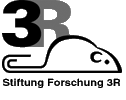
Zhihong Yang and Thomas F. Lüscher
Cardiovascular Research, Institute of Physiology, University Zürich and Cardiology, University Hospital Zürich, 8091 Zürich, Switzerland
zihongy@physiol.uzh.ch
Keywords: human; smooth muscle; bypass graft stenosis; cell cultures: organ-specific; reduction
Duration: 1 year Project Completion: 2000
Background and Aim
Coronary venous bypass graft stenosis is the most important complication limiting long-term clinical improvement in patients after bypass surgery. In addition to vascular smooth muscle cell (SMC) proliferation and growth factors such as PDGF, beta-FGF andthrombin, mechanical force (namely pulsatile stretch) plays an important role in the development of stenosis (1). Although much is known about the response of signa transduction pathways to growth stimuli, the possibility of targeting these mechanisms to prevent deleterious human venous graft cell growth remain largely unexplored. Studies with human grafts in culture combined with the simulation of pulsatile streches off the possibility of reducing, or in the case of mechanistic studies even replacing the use of animal models.
Method and Results
In this project we investigated the effects of several cardiovascular therapeutics and specific inhibitors of the intracellular signalling pathways Rho, GTPase, MAPK, S6K, etc. on human SMC proliferation when the cells were subjected to pulsatile stretch or growth factors such as PDGF. SMC were isolated from human saphenous veins as previously described (1) and the cells were seeded onto Flex I culture plates coated with type-1 collagen. The plates were then placed on a computerized Flexercell Strain Unit (Flexcell Corp., McKeesport, Pa., USA) in an incubator (37oC, 5%CO2/95% air) and subjected to mechanical stretch (60cycles/min; 25% elongation) in the presence or absence of the test substances substances. Cell proliferation was assayed by means of [3H]-thymidine incorporation as described previously (1).
We showed that pulsatile stretch significantly stimulated [3H]-thymidine incorporation in SMC; this effect was markedly enhanced by heparin. In contrast, [3H]-thymidine incorporation induced by the peptide growth factor PDGF-BB (5ng/ml) was inhibited by heparin (2). Statins prevented stretch-induced SMC proliferation. Rho-kinase inhibitors (Y-27132 and hydroxyfasudil) or transient transfection with a dominant negative RhoA mutant also inhibited proliferation. Co-treatment with mevalonate in the presence of the statin restored PDGF-induced proliferation but had only slight effects on stretch, although mevalonate restored RhoA activation. Stretch induced hyperphosphorylation of pRb and downregulation of p27 expression. Cerivastatin or Rho-kinase inhibitors prevented hyperphosphorylation of pRb but not downregulation of p27. Mevalonate had a small restorative effect on pRb but not on p27 expression. p44/42MAPK and PI3K/Akt were also involved in stretch-induced SMC proliferation. Cerivastatin had no effects on stretch-induced p44/42MAPK and PI3K/Akt activation; however mevalonate induced pronounced RhoA activation, which inhibited the PI3K/Akt pathway and in turn reduced SMC proliferation (3).In contrast to statin, calcium antagonists inhibited PDGF induced cell growth but had no effects on responses to pulsatile stretch.Inhibition of S6K or tyrosine kinase by specific inhibitors prevented cell growth following either stimulus. Calcium antagonists inhibited PDGF induced cell growth but had no effects on responses to pulsatile stretch (4).
Conclusions and Relevance for 3R
This in vitro model could be used to test various drugs in human cells in response to classic peptide growth factors and mechanical stretch. The stimulatory effect of heparin calls into question the clinical use of this substance in patients following coronary bypass surgery (3). Several animal models have been established to study the effects of mechanical forces on venous graft disease. However, despite the importance of animal models, several concerns have been raised as to the suitability of these approaches for understanding human disease and human therapy due to species differences. The present system uses isolated human venous smooth muscle cells cultured under conditions mimicking pulsatile forces observed in vivo. It will allow the discovery of new drugs interfering with cell growth in response to pulsatile stretch without the use of any animals. The results obtained so far will have great clinical impact for future treatment of venous bypass graft disease in patients.
References
1. Predel HG, Yang Z, Von Segesser L, Turina M, Bühler FR and Lüscher TF (1992) Implication of pulsatile stretch on growth of saphenous vein and mammary artery smooth muscle. Lancet, 340: 878-9.
2. Yang Z, Birkenhauer P, Julmy F, Chickering D, Ranieri JP, Merkle HP, Lüscher TF and Gander B (1999) Sustained releaase of heparin from polymeric particles for inhibition of human vascular smooth muscle cell proliferation. J Controlled Release, 60:269-277.
3. Yang Z, Kozai T, van de Loo B, Viswambharan H, Lachat, M, Turina MI, Malinski T, and Lüscher TF (2000) HMG-CoA Reductase inhibition improves endothelial cell function and inhibits smooth muscle cell function and inhibits smooth muscle cell proliferation in human saphenous veins. JAAC, 36: 1691-97.
4. Kozai T, Yang Z, Eto M, Matter Ch, Yang Z, Shimokawa H, and Lüscher TF (2003) Pulsatile Stretch Induces Proliferation of Human Vascular Smooth Muscle Cells via Rho/Rho-kinase, PI3K/Akt, and p44/42MAPK: Prevention by HMG Coenzyme A Reductase Inhibition (submitted).